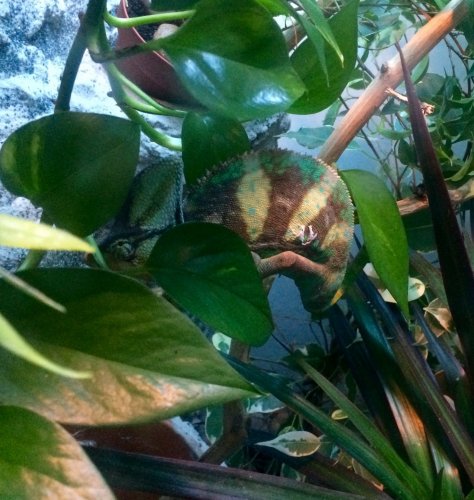Anastasia_k
Member
Over the last days Lenny seemed to have decreased appetite for crickets, he used to love hunting them but now doesn't bother, he still eats from the cup but a lot less than he used to and kind of stays in one spot and won't eat unless I put the cup really close to him, he would sometime try stretching his entire body to reach the cup but won't actually walk to it. Although he showed some interest when a housefly got into his enclosure. I figured he might like "flying" insects more and was feeding him with tongs which he enjoyed more, but yesterday his tongue got stuck on the metal and he had some trouble unsticking it. Today in the morning he yawned as usual and I saw a lot of thick stringy saliva at the sides of his mouth, it was clear and transparent. I took him out of the enclosure and he did not like it so he was breathing out loudly, like hissing but with mouth closed, and I swear I heard some popping sounds, although there was no discharge from his nose. I panicked and rushed to the vet, but the vet said everything is fine. He listened to his lungs and said all is good, and the extra saliva is normal as long as it's clear and not white and there is no discharge from the nose. Lenny did not make any popping sounds throughout the day, only when I held him in the morning. Later when I came home I tried feeding him, but he seemed to have trouble getting his tongue fully out, he missed twice and only ate when I held a cricket really close to him. Could it be that he injured it and would it heal on it's own? Do you guys think he is really ok apart from that or should I double check with another vet?





